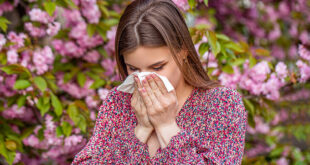Pests are not only a nuisance but can also pose significant health risks and damage to property. Whether it’s rodents scurrying through your attic, termites slowly eating away at your home’s foundation, or mosquitoes spreading disease, pest infestations are a problem every homeowner faces at some point. Pest control is essential to ensuring a safe, healthy, and comfortable living environment. This article provides a comprehensive guide to pest control, covering everything from prevention to professional treatments.
Why Pest Control is Important
Pests are more than just an inconvenience. They can cause severe damage to homes and property, spread diseases, contaminate food, and trigger allergic reactions. Common pests like termites, cockroaches, rodents, and mosquitoes are not just annoying; they are carriers of harmful pathogens that can lead to health issues such as food poisoning, asthma, or the transmission of diseases like Lyme disease, malaria, and Zika virus.
Beyond health concerns, pests can cause significant financial losses. Termites alone cause billions of dollars in damage to homes and buildings each year. Mice and rats can chew through electrical wires, which may lead to fires or expensive repairs. Cockroaches and other insects can damage furniture and clothing, while ants and beetles can spoil food stores. Pest control helps avoid these issues and maintain the integrity of your home and property.
Types of Pests and Their Threats
Pests come in many forms, each bringing its own unique set of problems. Let’s take a closer look at some of the most common pests that require attention.
1. Rodents (Rats and Mice)
Rodents are notorious for spreading diseases like Hantavirus, Salmonella, and Leptospirosis. They also cause damage by chewing through wires, insulation, and furniture. Rodents are often attracted to food sources and can enter homes through small gaps in walls or around doors.
2. Termites
Termites are silent destroyers that can cause extensive damage to the structure of your home. They feed on wood and can remain undetected for years. In the United States alone, termites cause billions of dollars in damage annually. Termite colonies can quickly multiply, leading to significant financial loss if not managed early.
3. Cockroaches
Cockroaches are not only a nuisance but also a health risk. They can spread diseases such as Salmonella, E. coli, and allergens that may trigger asthma attacks, especially in children. Roaches are hardy creatures, often surviving on very little food, and can hide in small cracks and crevices.
4. Ants
Ants are common household pests that can contaminate food, destroy wood, and damage plants. Carpenter ants, in particular, burrow into wood to build their nests, leading to significant structural damage. Other types of ants, like sugar ants and fire ants, can invade kitchens and gardens in search of food.
5. Mosquitoes
Mosquitoes are notorious for transmitting diseases like West Nile virus, Zika virus, and Malaria. They thrive in humid environments and are typically found near stagnant water sources. A mosquito bite can not only cause itching and discomfort but also put you at risk for serious illnesses.
6. Bedbugs
Bedbugs are small, reddish-brown insects that feed on human blood, typically at night. These pests are often transported through luggage or secondhand furniture, making them a common problem in homes and hotels. While they don’t transmit diseases, bedbugs cause itchy, painful bites and can lead to sleepless nights.
How to Prevent Pest Infestations
Prevention is the first step in pest control. By making your home less inviting to pests, you can reduce the chances of an infestation. Here are some key steps for pest prevention:
1. Seal Entry Points
Inspect your home for cracks and gaps in walls, windows, doors, and foundations. Seal any potential entry points with caulk or weatherstripping. Ensure that windows and doors close tightly, and repair damaged screens.
2. Keep Your Home Clean
Pests are attracted to food and water. Regularly clean kitchen surfaces, sweep floors, and dispose of trash. Store food in airtight containers and make sure your garbage cans are tightly sealed.
3. Fix Leaks and Reduce Moisture
Pests like cockroaches, termites, and mosquitoes are attracted to moisture. Fix any leaks in pipes, faucets, or roofs. Use dehumidifiers in damp areas like basements, bathrooms, and attics to reduce moisture and discourage pest activity.
4. Maintain Your Yard
Keep your lawn trimmed, and remove any piles of leaves, wood, or debris that could provide shelter for pests. Keep tree branches and shrubs trimmed away from the house to prevent pests from using them as pathways to enter.
5. Proper Waste Disposal
Dispose of trash regularly, and ensure that bins are sealed tightly. Avoid leaving food scraps or pet food outside, as this can attract pests like ants, rodents, and raccoons.
How to Control Pests
While preventive measures can significantly reduce pest activity, some infestations require more aggressive control methods. Here are a few options for pest control:
1. DIY Pest Control
For minor pest problems, DIY pest control can be effective. Store-bought insecticides, traps, and natural remedies like essential oils can help control pests. For example, diatomaceous earth can be used to kill insects like bedbugs, cockroaches, and fleas. Homemade sprays with vinegar or lemon can deter ants, mosquitoes, and flies.
2. Pest Control Products
There are a variety of over-the-counter pest control products designed for specific pests. From ant bait traps to termite repellents, these products can be highly effective in controlling common household pests. However, care should be taken to follow instructions carefully to avoid harming pets or family members.
3. Professional Pest Control Services
For larger infestations or particularly difficult pests (such as termites or bedbugs), professional pest control services are recommended. Licensed pest control experts have the tools, knowledge, and experience to address a wide range of pest problems. They can use advanced methods such as heat treatments, fumigation, or targeted chemical treatments to eliminate pests quickly and effectively.
Conclusion
Pest control is an essential part of home maintenance, ensuring that your living environment remains safe, healthy, and comfortable. Whether you choose to handle pests on your own or hire a professional, it’s important to address infestations promptly to prevent them from causing serious damage or health issues. By taking proactive steps to prevent pests and acting swiftly when needed, you can protect your home and loved ones from the harmful effects of pests.
 The Random Collective Where Curiosity Meets Creativity
The Random Collective Where Curiosity Meets Creativity






